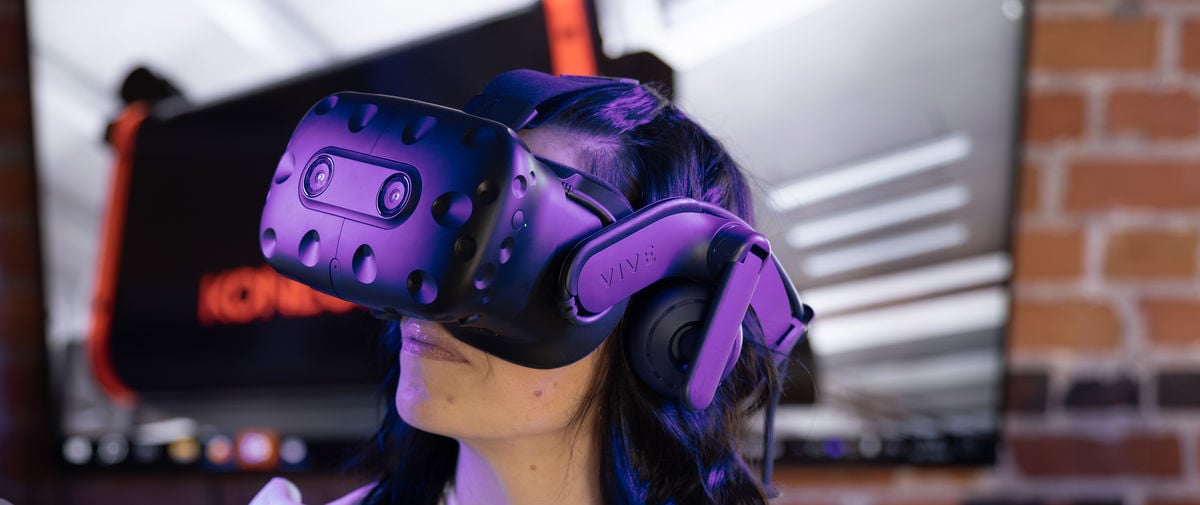Imagine stepping onto a factory floor where machines communicate like seasoned colleagues, robots perform processes with precision and AI independently manages and optimizes the flow of production. Futuristic? Or something already happening?
The factory floor is no longer just a place of manual labor and conveyor belts – it’s becoming a dynamic, interconnected, and intelligent environment. The megatrends that the material handling industry is facing from emerging technologies, such as electrification, autonomous machines, AI and augmented reality, to sustainability requirements, are revolutionizing business and production environments, and the way factories operate.
Industrial metaverse offering new opportunities
The industrial metaverse, envisioned as a digital representation of physical industrial environment, systems and assets, provides new opportunities for companies to simulate and analyze the performance of machinery, foresee potential issues, and optimize operations without interrupting the workflow.
The metaverse not only features autonomous machines, but also allows the factory to operate autonomously and virtually through different technologies and tools such as AI, human-machine interfaces, real-time data, and connectivity.
Franz Schulte, Konecranes Chief Technology Officer, envisions a future production environment that fosters dynamic collaboration between individuals and machines.
“In a smart factory, materials can move autonomously during non-working hours and be prepared for the following day when employees arrive at the factory. Such a futuristic production environment has the potential to boost productivity and enhance competitiveness,” Schulte shares.
Automation and robotics are becoming the extended workforce
Evolving technologies are leading companies towards more meaningful, less dull, dirty and dangerous jobs. Automation and robots are not only taking on repetitive and hazardous tasks, but are also becoming more sophisticated, capable of performing complex functions that were once deemed impossible.
“In the future, a factory worker might simply swing their hand on the production floor to move a hoist towards them or use augmented reality glasses to receive guidance on where to move a load,” Schulte envisions.
Collaborative robots, or cobots, are already working alongside human workers, enhancing efficiency and safety. The synergy between humans and machines is creating a smarter, safer, and more efficient workplace and allowing the workforce to focus on more complex and creative aspects of production.
“New technology has already increased safety of personnel and workplaces in various ways. In future, intelligent devices will automatically stop when detecting human movement nearby to ensure safe working environment,” he continues.
AI-integrated machines will revolutionize factory work
Currently, many companies use AI for diverse office tasks, but it’s becoming increasingly important also in in manufacturing processes, products and services. As AI becomes integrated in machinery, it will revolutionize the way people work on a larger scale.
“As AI enhances the intelligence of machines, the focus of human work will shift to more creative problem solving and managing a larger fleet of machinery instead of operating individual machines. Newly onboarded and less experienced workers will be able to quickly adapt to using multiple machines and performing a variety of tasks with the help of virtual assistants, trainers, and videos,” Schulte tells.
The change is beneficial as it broadens and diversifies employment and recruitment opportunities in the manufacturing sector, particularly important given the current challenge industrial companies face in shortage of workforce.
However, transitioning to autonomous machines necessitates change management, support and training for employees.
“As factory work evolves, so do the skills required to work in new production environments. Workers need a combination of technical and problem-solving skills, and adaptability to succeed in this evolving landscape. Training programs and continuous learning are essential to prepare workers for this new environment,” Schulte emphasizes.
Digitalization is reshaping factories
Industrial digitalization, through the Internet of Things (IoT) and big data analytics, is turning factories into smart environments that can predict equipment maintenance needs, optimize production schedules, and respond in real-time to changes in demand. In the future, big data and analytics can be increasingly used to identify actionable patterns and opportunities from data in all areas of business.
“Harnessing data, digitalization, and machine-to-machine connectivity continues to evolve, providing enhanced process optimization. Also, on-going research on 5G technology and new 6G network will offer new opportunities for companies,” Schulte tells.
But manufacturing automation is not just about robots; it's also about the flow of information. The technological transformation in factories is enabling a level of coordination and insight that was previously unattainable, leading to new levels of productivity and flexibility.
“It’s important to consider what our customers are looking for globally and be flexible in adapting our products to meet those current and future needs,” Schulte concludes.

